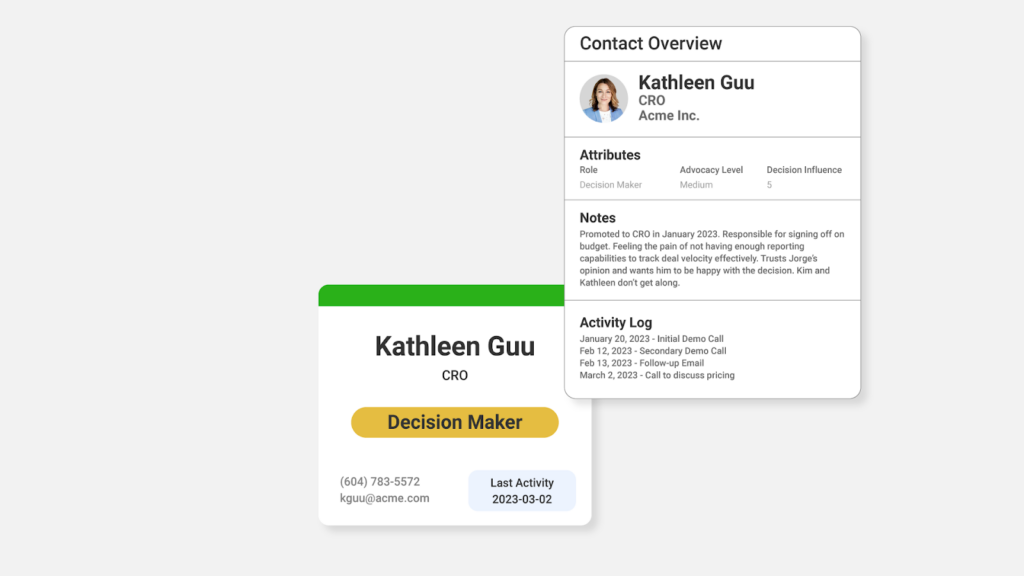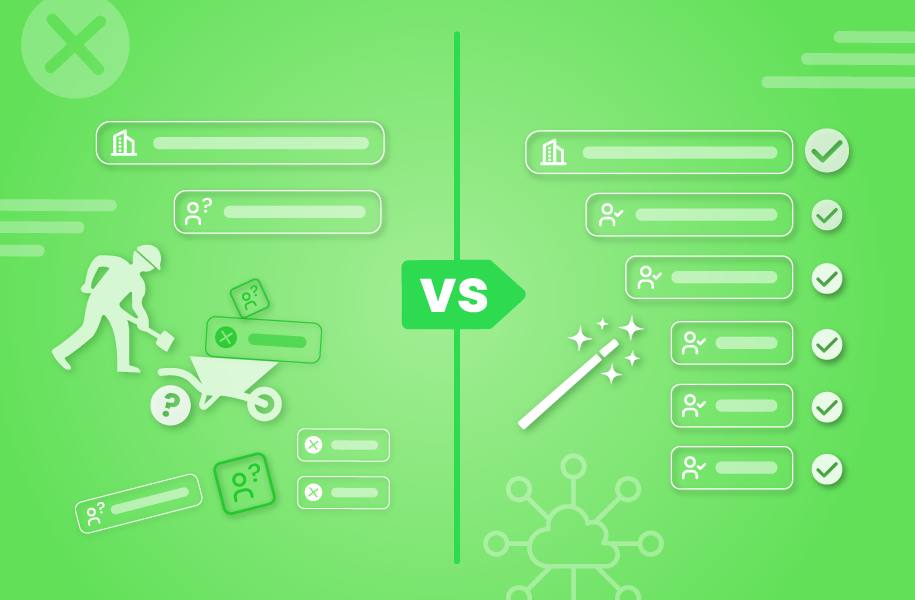Introduction: The status quo of mass territory reassignment
The vast majority of enterprise organizations say that once a territory plan is rolled out, they reassign records another five to ten times.
It’s a manual and time-consuming process, one that takes between hours or days to complete. In the case of companies that have dozens of sales reps or tens and thousands of records, reassignment could take longer than a month.
Whether it’s because of challenging economic conditions or sales reps changing roles or joining and leaving the company, organizations are forced to constantly reassign territories.
Yet, there are only so many weeks in the year – and these changes aren’t being made with the pace of the business.
Why is this the status quo? It’s unpredictable, it’s manual, and it’s time-consuming.
You might also like:
- Q&A: How are Ops Leaders Solving Common Data Challenges
- Always be optimizing: Salesforce territory management best practices
Reassignment affects your entire team and your revenue
Mass territory reassignment is a process that repeats over and over.
Not only does it affect your entire team but it affects your revenue as well:
- Operations teams are slowed down because they can’t make these changes fast enough to keep up with changes in the business.
- Sales reps are slowed down by incorrect routing (or leads and accounts not being assigned at all).
- IT is slowed down by dozens of cases and requests.
The bottom line? Mass territory reassignment leads to massive revenue leakage. Deals are at risk and in the time that it takes to reassign records, you could have lost open opportunities, missed leads, disengaged active prospects, and left open cases with current customers leading to a higher risk of churn.
There’s a better way to manage territories
Modern problems require modern solutions.
Fortunately, there’s a better approach than manually reassigning territories – one that allows companies to:
- Easily redefine territories.
- Say goodbye to manual assignment by embracing mass automation.
- Empower their entire go-to-market team and give them more time to focus on important tasks.
In fact, a survey found that automating territory reassignment leads to 60% fewer account conflicts, while only taking a fraction of the time to complete.
But in case you need more convincing, here are eight signs that you need to modernize your mass territory reassignment process.
8 signs you need to modernize your mass territory reassignment model
Manual effort is slowing you down
Enterprise organizations with large sales teams are still managing their territory rules outside of Salesforce, in spreadsheets. Unfortunately, sales leaders can spend days, or even weeks, determining the best course of action.
“Leads go cold fast. People want to make quick decisions and you have to show that you’re responsive or eager to do business.”
– Keith Hardwick, Manager of Salesforce Development at Alfresco
That doesn’t even begin to consider the process of updating and transferring those records accordingly. At the end of the day, you’re suffering from a process that’s manual, involves multiple parties, and is incredibly time-consuming.
Records are being reassigned incorrectly or left unassigned
Salesforce uses the mass transfer tool to change ownership of records like accounts, leads, and custom objects. One drawback, however, is that the user will need to manually search for each record that they want to transfer manually, and then select all of them.
Due to the tedious process of transferring accounts, records that are assigned incorrectly or left behind are a common occurrence. Since there’s no central source of truth collecting the accounts into territories, it’s also hard to see holistically if an error has been made.
When sales reps are slowed down or leads go cold, it impacts your speed-to-lead and hurts their ability to close a deal.
Your transfer amount exceeds the out-of-box record limit
Enterprise companies can have dozens, or even hundreds, of sales reps. And if they’re selling to other enterprise companies with complex subsidiaries, they could be dealing with tens of thousands of records.
One drawback of Salesforce’s mass transfer tool is that a user can only transfer 250 records at a time. In order to tackle tens of thousands of records, you’ll have to use the Data Loader – a process that requires the user to export IDs and records, prepare a spreadsheet, and upload to Salesforce.
You still run into account conflicts
Account conflicts are another way that the mass transfer tool and incorrect assignment can hurt your business. They often occur in one of two ways.
The first scenario is that a lead is incorrectly transferred to a sales rep. After working the lead, the prospect reaches out and informs the rep that they’re already talking to another member of the sales team – awkward.
This results in time lost that could have been spent on another potential deal and ultimately is not a good look for the company.
The second scenario is a lead or opportunity that gets transferred to a sales rep, but is part of another rep’s territory. The first sales rep spends tons of effort on the deal and brings it to the finish line, before finding out that it was a subsidiary of someone else’s account.
Territory conflicts and commission splits rarely ever end well. Oftentimes, sales reps will leave if they don’t go their way – and if so, leadership will be forced to reassign territories, yet again.
No visibility into sales territories or account hierarchies
In order to reassign territories, operations teams need to pull data outside of Salesforce to organize it, analyze it, and determine what changes need to be made.
The only way to do that, however, is by using a spreadsheet. Unless you’re using a third-party automation tool in conjunction with a BI tool, there’s no way to visualize that data or existing territories and make changes within Salesforce.
 If your operations team doesn’t have visibility into account hierarchies and sales territories, then your sales team is definitely experiencing that same challenge. Issues like account conflicts and territory splits won’t be stopping anytime soon.
If your operations team doesn’t have visibility into account hierarchies and sales territories, then your sales team is definitely experiencing that same challenge. Issues like account conflicts and territory splits won’t be stopping anytime soon.
In-play deals are at risk whenever a sales rep leaves
The out-of-the-box Salesforce mass transfer tool requires the user to manually search and select the records that they want to reassign. It’s sometimes easy to ensure that high-priority deals change hands – but what happens to other in-play deals that get lost in the transfer?
When a sales rep leaves the team, they also take any knowledge or progress of that open deal.
 Unless they left notes that are somewhere that everyone can access, like a relationship map or what we call an influence map, the new record owner will be starting from scratch and have a hard time catching up.
Unless they left notes that are somewhere that everyone can access, like a relationship map or what we call an influence map, the new record owner will be starting from scratch and have a hard time catching up.
Deals slip through the cracks
While deals that are in redlines aren’t usually missed, it can be difficult to correctly reassign all accounts, leads, and any other potential deals.
There are also a number of deals that live among these records – they may not be open opportunities, but good sales reps know to be persistent, go back, and check in on old accounts. But if a record stays unassigned, nobody will be knocking on these doors.
Data governance rules stop your team from being agile
The faster that your sales team can respond to leads, the more likely they are to close deals. In that same vein, teams that can quickly reassign territories and remain agile will spend more time selling – and less time stuck in spreadsheets.
Another challenge around Salesforce’s mass transfer tool, however, is that a Salesforce admin will need to access and do the transfer themselves – in most cases, it’s not something that sales leaders, or even sales operations teams, can go ahead and do on their own.
When it comes to Salesforce orgs, large companies often have lots of red tape to lock down data proliferation. But these processes, when it comes to account and record reassignment, will ultimately hold back the speed and agility of your sales team.
Conclusion
There’s no reason to stick to the status quo.
The traditional approach to mass territory reassignment costs you hours to months of manual effort – not to mention your sanity.
Remember, we said at the start if you spend roughly a month to reassign and have to do it at least 9 times a year – add that together and you are spending 9 months of the year in a reassignment cycle.





